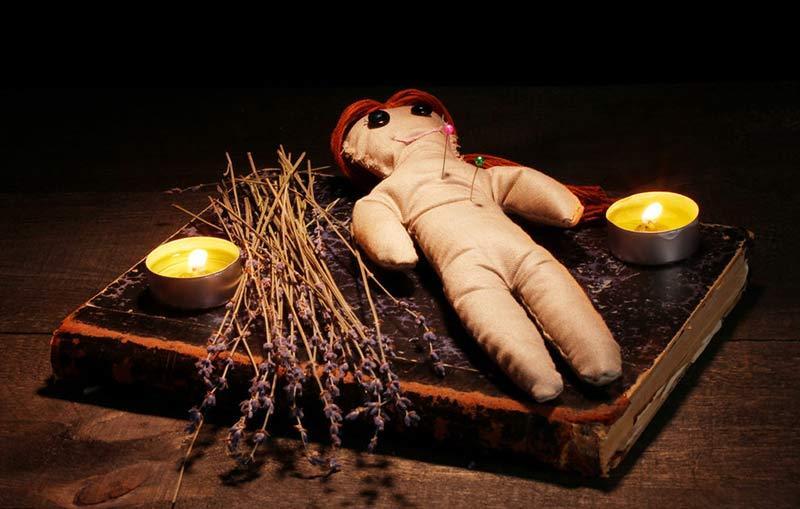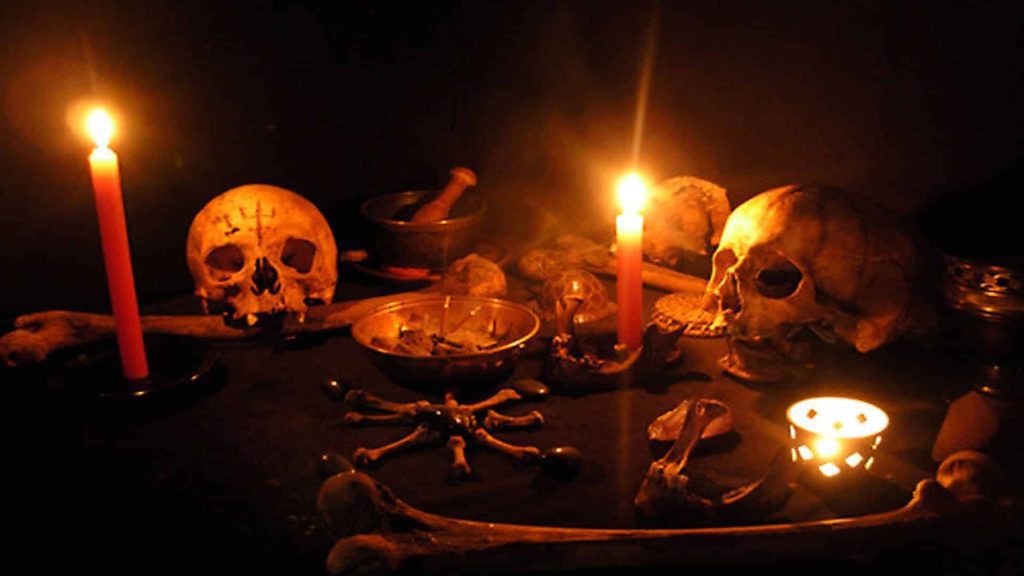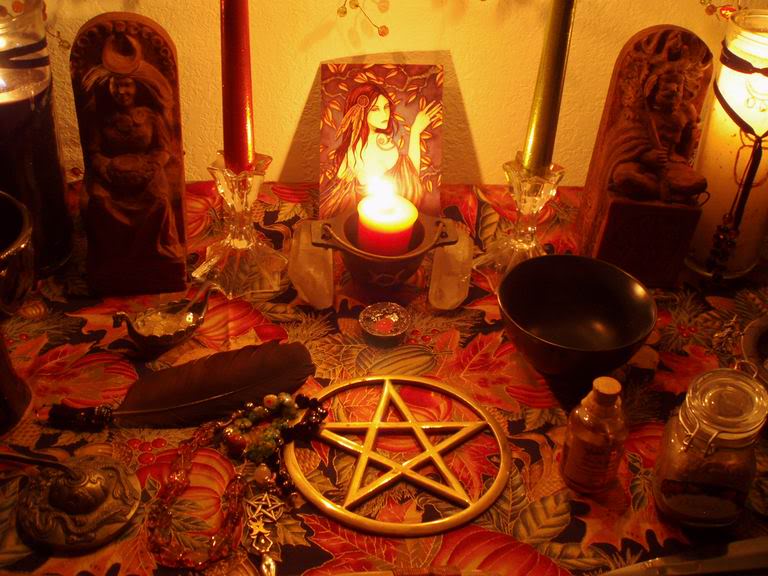Humiliation rituals are a type of ritual that is designed to cause shame or embarrassment to the target. They can be used for a variety of purposes, such as revenge, punishment, or to gain power over someone.
Humiliation rituals are often associated with black magic, but they can also be found in other forms of witchcraft. They can be performed in a variety of ways, such as using spells, potions, or physical objects.
Historical Context of Humiliation Rituals in Witchcraft
The historical context of humiliation rituals in witchcraft is deeply intertwined with the broader history of witchcraft itself. Witchcraft, often associated with the practice of magic, has a long and complex history that spans across cultures and time periods. Within this history, the use of rituals and spells for revenge, including humiliation rituals, has been documented in various forms.
During the European witch trials of the 16th and 17th centuries, accusations of witchcraft were often fueled by personal vendettas, societal fears, and religious beliefs. In these trials, individuals accused of witchcraft were subjected to public humiliation as a means of extracting confessions and serving as a deterrent to others. Humiliation was seen as a way to break the accused and reinforce the power dynamics between the accusers and the accused.
Humiliation rituals were also prominent in folk magic practices across different cultures. In some cases, folk practitioners would create magical objects or perform spells with the intention of publicly shaming or humiliating an individual believed to have caused harm. These rituals were often rooted in the belief that exposing and publicly shaming the wrongdoer would restore balance, justice, and protect the community from further harm.
Within specific magical traditions, such as Hoodoo or Voodoo, there are historical references to the use of humiliation rituals. These rituals were employed as a means of revenge against individuals who had caused harm or wronged others. They often involved the creation of symbolic objects, such as dolls or poppets, which were manipulated or subjected to various rituals to bring about the desired humiliation and suffering of the target.
It is important to note that the historical context of humiliation rituals in witchcraft is not limited to a specific time or place. Similar practices can be found in various cultures and magical traditions around the world. The motivations and specific rituals may vary, but the underlying concept of using public humiliation as a form of revenge remains present in many historical accounts.
Understanding the historical context of humiliation rituals in witchcraft provides insights into the evolution of magical practices and the cultural beliefs surrounding revenge. It highlights the complex interplay between power dynamics, justice, and the desire for retribution within the realm of witchcraft throughout history.


Most Common Types of Humiliation Rituals
There are many examples of humiliation rituals that are considered dangerous or unethical in witchcraft. Some of the most common include:
- European Witch Trials: During the infamous witch trials in Europe, individuals accused of witchcraft were often subjected to public humiliation as part of their trial. This could include being stripped naked, shaved, or marked with devil’s symbols to publicly expose their alleged connection to witchcraft. Humiliation was used as a means to break the accused and extract confessions.
- Hoodoo: Hoodoo, a folk magic practice originating in the African American community, has historically included humiliation rituals. In some cases, practitioners would create “war water” or “humiliation powder” by combining ingredients such as urine, graveyard dirt, or other substances, and then sprinkle or throw it in the path of their enemy. The belief was that the target would be humiliated or brought to disgrace.
- Voodoo rituals: There are many humiliation rituals in this tradition the most common one is the voodoo doll ritual, This one involves making a doll that represents the target and then subjecting it to various forms of abuse. This can be very dangerous, as it can lead to the target experiencing similar pain and suffering. Other popular ones are “Bottle Spells” or “Witch Bottles”,these rituals involve filling a bottle with personal items, such as hair or nail clippings, along with other symbolic ingredients. The bottle is then buried or hidden near the target’s property, with the intention of bringing humiliation and suffering to the individual.
- Curse rituals: Curse rituals are spells that are designed to cause harm to the target. Curses can be spoken, written, or chanted. They can also be placed on objects that the target will come into contact with, such as food or clothing. Curses can be very dangerous, as they can have unintended consequences. For example, if a curse is not properly performed, it can backfire on the person who cast it.
- Hex rituals: Hex rituals are similar to curse rituals, but they are typically less powerful. Hexes are often used to cause minor inconveniences for the target, such as bad luck or illness. Hexes can still be dangerous, however, so it is important to be careful when performing them.
- Middle Eastern Witchcraft: In some Middle Eastern cultures, practitioners of witchcraft may employ humiliation rituals. These rituals often involve the creation of talismans or amulets containing symbols or verses from religious texts. The intention is to publicly shame the target, undermine their reputation, or bring about their downfall.
- Indigenous Shamanic Practices: Within various indigenous cultures, shamans or medicine people may utilize humiliation rituals as a form of spiritual punishment or justice. These rituals can involve public shaming, verbal condemnation, or symbolic acts to expose and humiliate the offender, aiming to restore balance within the community.
It is important to note that the examples provided here are based on historical accounts and cultural practices. The use of humiliation rituals in witchcraft can vary greatly, not only between cultures but also within different magical traditions. Practices may evolve and adapt over time, and contemporary witchcraft practitioners might incorporate elements of humiliation rituals in their own unique ways.
If you are considering performing a humiliation ritual, make sure that you understand the risks involved, and that you are prepared for the consequences.
The Power of Cord Cutting Rituals: Releasing Attachments and Restoring Inner Freedom
Motivations and Intentions
The motivations and intentions for employing humiliation rituals in witchcraft can vary among practitioners and depend on individual beliefs, personal experiences, and cultural contexts. While it is important to recognize that not all practitioners engage in or endorse the use of humiliation rituals, the following are some motivations and intentions that may drive individuals who choose to incorporate them:
- Restoration of Balance and Justice: Some practitioners may believe that humiliation rituals serve as a form of karmic retribution or cosmic justice. They may view these rituals as a means to restore balance in situations where harm has been done. The intention behind employing humiliation rituals could be to bring about a sense of justice or equilibrium, ensuring that the wrongdoer faces the consequences of their actions.
- Personal Empowerment: For some individuals, engaging in humiliation rituals may be a way to reclaim personal power and assert themselves in the face of perceived injustice or harm. By publicly exposing and humiliating the target, practitioners may aim to assert their own strength, regain a sense of control, and restore their dignity or reputation.
- Protection and Defense: Employing humiliation rituals can also be driven by a desire to protect oneself, loved ones, or a community from perceived threats or harm caused by the target. By publicly humiliating the individual, practitioners may seek to deter them from continuing harmful actions or to send a clear message that their behavior will not be tolerated.
- Symbolic Transformation: Humiliation rituals can be seen as a symbolic act of transformation, where the target’s negative traits, actions, or energy are externalized and confronted. By publicly exposing these qualities, practitioners may intend to catalyze self-reflection, personal growth, or a change in behavior on the part of the target.
- Emotional Release or Catharsis: Engaging in humiliation rituals may provide practitioners with a sense of emotional release or catharsis. The act of publicly shaming the target can serve as a way to vent frustration, anger, or pain caused by the individual’s actions. It may offer a sense of closure or satisfaction to the practitioner as they witness the target experiencing the consequences of their behavior.
Motivations and intentions can vary greatly among practitioners, and the reasons for employing humiliation rituals are diverse and multifaceted. However, it is crucial for individuals engaging in such practices to critically reflect on their motivations, consider the potential consequences, and evaluate whether alternative approaches that prioritize healing, growth, and personal responsibility might be more beneficial.


Ethical Considerations
Ethical considerations regarding the use of humiliation rituals in witchcraft are crucial to ensure responsible and mindful practice. Here are some key points to consider:
- Consent and Harm: It is essential to respect the principle of consent and avoid causing unnecessary harm. Engaging in humiliation rituals without the explicit consent of all parties involved can be seen as a violation of their autonomy and dignity. Consider whether there are alternative approaches that can address the situation without resorting to humiliation or causing undue harm.
- Intentions and Motivations: Reflect on your intentions and motivations for employing humiliation rituals. Examine whether revenge or personal vindication is driving your actions, or if there are deeper underlying motivations rooted in healing, growth, or justice. Be honest with yourself about your intentions and ensure they align with ethical principles.
- Impact and Consequences: Consider the potential impact and consequences of humiliation rituals on all parties involved. While you may have reasons for seeking retribution or justice, think about the potential long-term effects on the target’s mental and emotional well-being. Recognize that humiliation can have severe consequences and may perpetuate cycles of harm rather than resolving conflicts.
- Cultural Sensitivity: Be mindful of cultural appropriation and respect the cultural practices and traditions from which humiliation rituals might originate. Appropriating rituals without understanding or honoring their cultural context can be disrespectful and harmful. Research and approach these practices with cultural sensitivity and understanding.
- Personal Responsibility: Take personal responsibility for your actions and decisions. Recognize that engaging in humiliation rituals can have far-reaching effects and may contribute to a culture of harm. Consider whether there are alternative approaches that promote healing, communication, and personal growth, rather than perpetuating cycles of humiliation and revenge.
- Ethical Frameworks: Familiarize yourself with ethical frameworks and guidelines within the broader witchcraft community. Engage in open discussions, seek guidance from experienced practitioners, and be willing to reflect on and adapt your practices based on ethical considerations.
Ethical considerations in witchcraft extend beyond the use of humiliation rituals and encompass various aspects of magical practice, including consent, respect for other traditions, environmental responsibility, and the well-being of all beings involved. It is important to approach witchcraft with mindfulness, empathy, and a commitment to do no harm.
Karmic Balance and Unintended Consequences
Karmic balance is a concept derived from various spiritual and philosophical traditions, including some forms of witchcraft. It is based on the belief that actions have consequences and that these consequences can manifest in one’s current or future experiences. The idea is that the energy or intention put into the world through one’s actions will eventually return to them, either positively or negatively, creating a balance.
When it comes to employing humiliation rituals in witchcraft, practitioners who believe in karmic balance may perceive these rituals as a means of restoring equilibrium or seeking justice. The intention is often to hold individuals accountable for their actions and ensure that they face the consequences they have brought upon themselves or others.
However, it is important to recognize that the concept of karmic balance can be complex, and the understanding and interpretation of karma can vary among different belief systems and practitioners. Some may view karma as an exact and immediate form of cause and effect, while others may see it as a broader concept that unfolds over multiple lifetimes or in more subtle ways.
Unintended consequences can arise when engaging in humiliation rituals, even with the intention of restoring balance. These consequences can include:
- Escalation of Conflict: Humiliation rituals, particularly when employed as a form of retaliation, can escalate conflicts rather than resolving them. The target of the ritual may respond with further harm or seek revenge, perpetuating a cycle of harm and potentially intensifying the negative energy surrounding the situation.
- Emotional and Psychological Impact: Humiliation can have severe emotional and psychological effects on individuals. While the intention may be to hold someone accountable, the consequences can lead to long-lasting emotional trauma, damaged relationships, and a perpetuation of negativity and harm.
- Ethical Dilemmas: Engaging in humiliation rituals raises ethical dilemmas, as it involves intentionally causing harm and infringing upon the autonomy and dignity of others. It is crucial to carefully consider the potential harm inflicted and whether it aligns with one’s personal ethical principles.
- Misinterpretation and Misuse: The use of humiliation rituals can be easily misinterpreted or misused by others. Rituals intended to restore balance or seek justice may be co-opted for personal gain or used to target innocent individuals, resulting in further harm and injustice.
It is important for practitioners to reflect on these potential unintended consequences and consider whether there are alternative approaches that prioritize healing, growth, and resolution. Engaging in open dialogue, seeking mediation or restorative justice processes, and focusing on constructive solutions can often lead to more positive outcomes and a healthier approach to conflict resolution within the realm of witchcraft.


Exploring Alternative Paths
Exploring alternative paths in witchcraft involves seeking out different approaches, perspectives, and practices that prioritize healing, growth, and constructive resolutions over harmful or retaliatory actions. Here are some aspects to consider when exploring alternative paths:
- Communication and Dialogue: Instead of resorting to humiliation rituals, prioritizing open and respectful communication can foster understanding, empathy, and the potential for conflict resolution. Engaging in honest dialogue can help all parties involved express their concerns, listen to different perspectives, and work towards finding common ground or a mutually agreeable solution.
- Restorative Justice: Restorative justice practices focus on repairing harm, promoting healing, and rebuilding relationships. Instead of seeking revenge or humiliation, practitioners can explore restorative justice approaches to address conflicts. This may involve mediation, facilitated dialogue, or other processes that allow all parties to express their needs and work towards finding resolutions that emphasize growth, understanding, and reconciliation.
- Self-Reflection and Personal Growth: Instead of solely focusing on the actions of others, practitioners can engage in introspection and personal growth. This involves examining one’s own role in conflicts, acknowledging personal biases or shortcomings, and actively working on self-improvement. By cultivating personal growth, practitioners can contribute to positive change within themselves and their communities.
- Healing and Empowerment: Shifting the focus from humiliation to healing and empowerment can be transformative. Practitioners can explore practices and rituals that promote self-care, emotional healing, and empowerment for themselves and others involved in conflicts. This can include energy work, rituals of self-compassion, or spells aimed at fostering personal growth and resilience.
- Community and Support: Engaging with supportive communities can provide alternative perspectives, guidance, and resources for conflict resolution. Connecting with other practitioners who prioritize ethical and constructive approaches can offer valuable insights and support in exploring alternative paths.
By exploring alternative paths, practitioners can contribute to a culture of understanding, growth, and transformation within the witchcraft community and beyond. It allows for a more mindful and responsible approach to conflicts, emphasizing the importance of empathy, healing, and personal accountability.
Conclusion
Humiliation rituals within witchcraft present a complex and contentious aspect of revenge. While they have historical roots and can be fueled by a desire for justice or personal empowerment, practitioners must carefully consider the ethical implications and potential consequences of such actions. Seeking alternative paths that prioritize healing, growth, and personal responsibility may offer more fruitful avenues within the realm of witchcraft. Ultimately, practitioners should strive to create a balance between their desire for retribution and their commitment to fostering a positive and compassionate spiritual practice.

